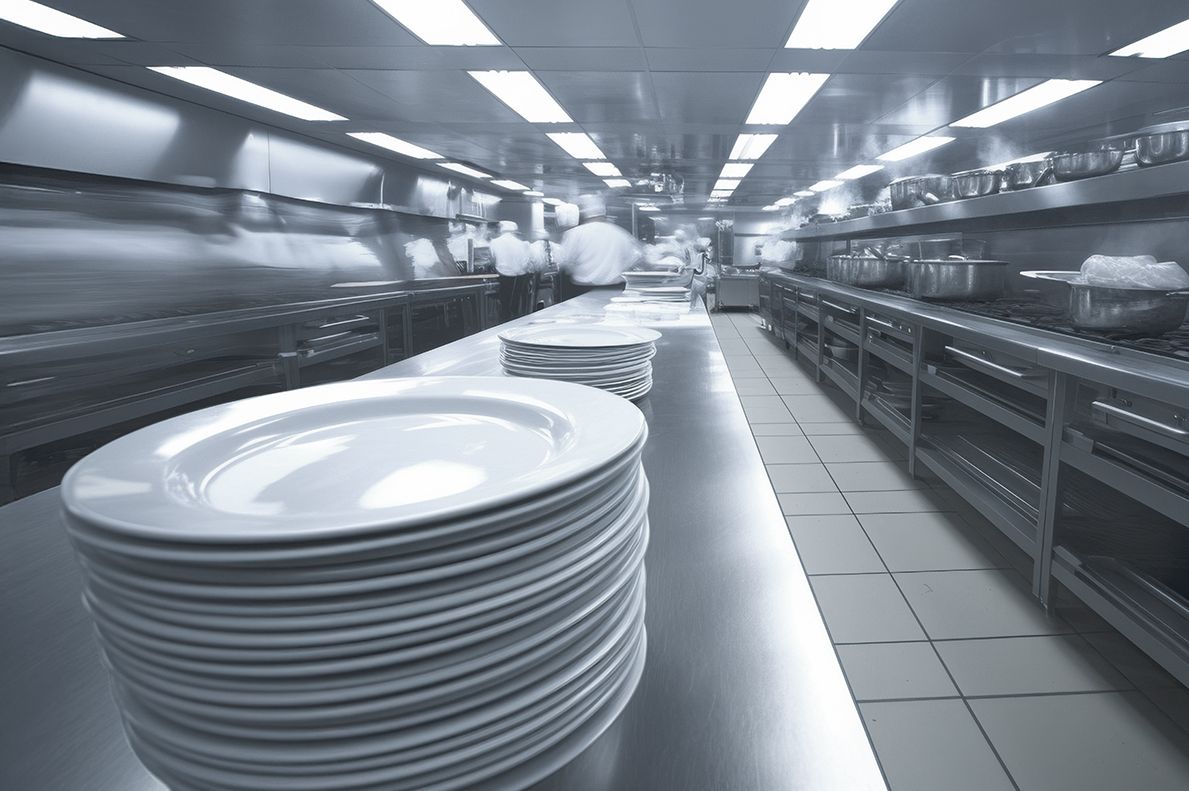News and Information

March 26, 2025
How to Future Proof Your Commercial Kitchen
The decision to make repairs, replacements, or perform full-scale remodels of a commercial kitchen is sometimes tricky. It requires you take a moment and step back. Walk through your kitchen as if you’re seeing it for the first time. Are the aisles cluttered? Are the ovens struggling to keep up with demand? Does the layout make sense for your workflow? Here’s our decision guide.
Safety
Safety is number one. If any of your kitchen equipment is a hazard—whether it’s leaking or sparking up, it could be putting your staff in danger and it’s time to repair or replace it. Keeping your equipment in safe working condition is non-negotiable.
E&S Evaluation
Next, assess whether your existing equipment is still meeting your needs. Keeping a preventative maintenance program can guide your decisions on what needs fixing or upgrading. However, frequent breakdowns or inconsistent performance might indicate it’s time to replace certain items. We recommend reviewing maintenance records with your team.
Compliance
Compliance is a key part of your equipment and supplies evaluation. If your equipment isn’t health code compliant, your facility won’t pass health inspections.
FDA Food Code: This model code provides guidelines to ensure safe food handling in retail and foodservice operations. Specifically, it mandates that dishwashers achieve a utensil surface temperature of at least 160°F during the final rinse, as measured by an irreversible registering temperature indicator.
NSF/ANSI Standard 3: This standard establishes minimum public health and sanitation requirements for commercial warewashing equipment, including dishwashers. It covers aspects such as materials, design, construction, and performance. If your water isn’t keeping up with these standards, consider a booster heater. Hubbell dishwasher booster heaters are engineered precisely to meet 180°F during the final rinse cycle for effective sanitization.
Energy Efficiency
Ovens, refrigeration systems, and dishwasher booster heaters all require a lot of energy. Outdated kitchen equipment can drive up utility costs. Review manufacturer specifications and evaluate the energy consumption of your existing appliances. Is your facility up to modern standards? If not, new equipment could be a worthwhile investment.
For your dishwashing room, Hubbell tankless booster heaters deliver on-demand hot water, meaning they only heat water when needed. They are an ideal solution for applications with variable or intermittent hot water use.
Hubbell electric dishwasher booster heaters have small tanks (3, 6, or 16 gallons). They maintain a small, preheated reservoir of water, delivering high-temperature water on demand and rapidly reheating its supply. While they have some standby heat loss, they are preferred in high-use commercial settings for their efficiency.
Energy-efficient refrigeration, ventilation systems with demand-controlled ventilation (DCV), and low-energy LED lighting all further reduce electricity consumption. For further reading, the U.S. Department of Energy provides guidelines and best practices for commercial kitchen equipment.
Is your layout working?
Deciding whether a remodel is necessary comes down to how well your current kitchen supports daily operations. Are bottlenecks slowing down service? Are safety hazards, like poor ventilation or cramped workspaces, putting your staff at risk?
A remodel might be the best move if your kitchen layout isn’t keeping up with demand or if inefficiencies are hurting productivity. Proper spacing and organization improve safety. Good design also helps staff communicate better, which leads to faster service and fewer mistakes.
Consider how your menu, customer volume, and workflow have evolved—if your space isn’t meeting those needs, it may be time to upgrade.
Cost Analysis
As a business, it all comes down to cost. Compare the costs of repairing equipment versus investing in new units or giving your entire kitchen a remodel. What’s the initial expense versus your potential return on investment?
Many Hubbell booster heaters parts are available online for easy repairs by part number. If you don’t see your part number available for purchase, contact our tech support team at (203) 378-2422. However, servicing outdated models from another manufacturer may require hard-to-find components.
Still, over time repairs may grow more expensive and operators will have to weigh the risk of future repairs and other operating costs. Sometimes replacing the unit altogether is a more economical choice.
A remodel is the perfect time to rethink your space—streamlining workflows, improving communication between stations, and making better use of available square footage. It’s the most impactful, but most expensive solution of the three. For further reading, use this guide to evaluate your equipment and supplies (E&S).
Reliability is not just a word for us – it's everything we do.
Hubbell offers the best booster heaters available. They consistently and accurately deliver hot water when needed. For over a century Hubbell has delivered commercial food service equipment that stands up to the rigors of even the busiest kitchens. Contact us today and experience the Hubbell difference.
